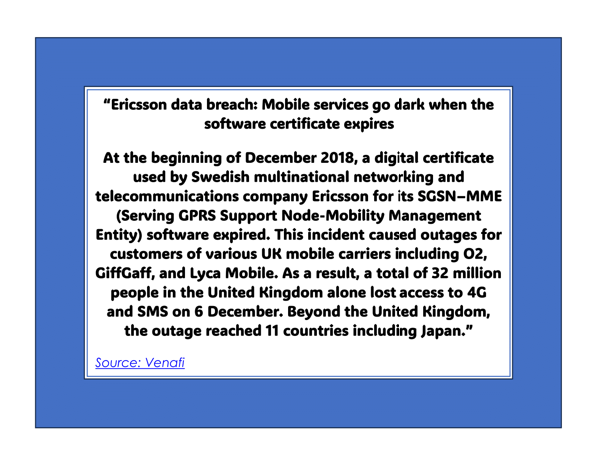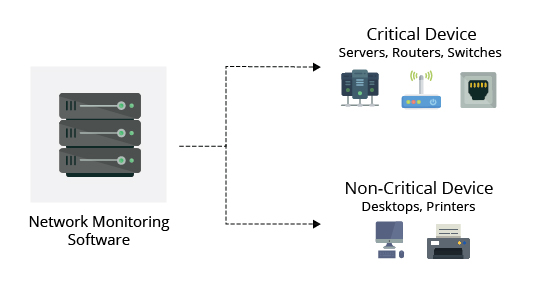Every enterprise organization strives for perfect network performance. In an ideal world, every network device would function as it should, network traffic would flow seamlessly and all network components including operating systems, hardware and software would tick along trouble-free 24/7.
But for every enterprise organization, their worst nightmares are often realized when parts of their network, or even their entire network infrastructure collapses, wreaking havoc not only on daily operations, but sometimes having a much farther-reaching impact on business continuity.
The question is...can network disasters be prevented? They absolutely can, with the right network management software.
What could possibly go wrong?
Enterprise networks can be complex environments, and there are a staggering number of things that can go wrong with network devices, hardware, software applications and systems. Without a robust network management and monitoring tool like IR Collaborate to oversee your network performance and troubleshoot problems, your network status is in jeopardy.
Just in case you think it could never happen to you, here are some of the most common network failure types, and how to prevent them.
Resource Failures
Anything related to your network's infrastructure is classed as a network resource, including hardware such as routers and switches, as well as services, for example DHCP and DNS servers, or anything else that interrupts the network protocols that keep data flowing on your network.
Solution: Network management solutions like IR Collaborate are designed to improve not only your network performance, reliability and security, but allow you to detect and diagnose problems before they impact your users or customers. Through a customized network management dashboard, you can monitor network configuration changes, and bandwidth usage, perform traffic analysis and other network events.
Software Failures
There are almost endless reasons for software failures. A license can expire, a configuration file can become corrupted or an error in a software update can cause serious issues.
Other software failures may occur if it's generic, or purchased from a vendor - or if the application has been developed in house. If it takes too long to get your software up and running again it could cost your organization dearly.
Below: An example of the problems caused by an expired software license

Solution: A network monitoring tool like IR Collaborate can help keep track of your software performance through detailed analytics and support data. As a network management solution, it can help you manage software licenses, and proactively identify available, deployed and unused, or underused software licenses as well as maintaining compliance.
Hardware failures
Hardware problems are also common, including defective cabling or connectors. Malfunctioning hardware can generate network errors on the equipment it's connected to, and can initially seem like a network outage or internet connection problem.
This can also occur if a copper or fiber-optic cable is damaged, reducing the amount of data that can go through it without causing packet loss.
Solution: The best way to monitor hardware is to have a monitoring tool like IR Collaborate that can track, identify and measure network errors on all network interfaces, creating instant alerts if problems arise.
Intermittent disruptions in connectivity
Intermittent issues are much harder to diagnose and troubleshoot than consistent problems.
Connectivity disruptions can affect your network in various ways, including unpredictable connection drops, slow data transfer, or recurring of network unavailability. These issues can seriously disrupt productivity, causing downtime which can affect your bottom line.
Solution: Network management software like IR Collaborate can continuously track network performance, diagnose where network issues are occurring and identify patterns of intermittent problems.
What does network monitoring software do?
Effective and efficient network management is all about looking at a network proactively and fixing real-time issues, rather than trying to fix something after it's already failed. Network status and device monitoring is crucial to any organization to avoid downtime.

Image source: Manage Engine
Studies estimate that downtime costs businesses around $9,000 per minute, with larger enterprise organizations facing possibly hundreds of thousands per hour. These costs are rising, putting pressure on businesses to invest in the network management solutions to minimize downtime and enhance disaster recovery plans.
A network performance management tool enables IT teams to identify problems as they happen, determine root cause, and set specific configurations on the network and devices remotely. Network management also provides the means to update configurations of vital infrastructure devices and troubleshoot network traffic problems as they occur.
One of the primary goals of a network management tool is to help keep your voice and video, various devices and other Unified Communications (UC) and network applications running at optimal performance.
When problems do occur, network management software creates custom alerts to the problem or pending problem, along with analysis to narrow down and diagnose the cause.
Good network management software allows you to monitor the status of the entire network and devices preferably from an easy to use, single pane of glass.
Who needs network management solutions?
Every enterprise organization's operations revolve around their IT network, so it's critical that they have network management software as an integrated part of their IT strategy.
Managed service providers, and those responsible for complex IT infrastructure and network management, certainly need network management software. Commercial and residential integrators who commonly install IoT technology also need to ensure that everything works correctly as devices get attached to a network.
Generic vs specialized tools
Vendor network performance monitoring tools are made specifically for certain equipment, in other words, they monitor only the solutions of the supporting vendor. When it comes to third party monitoring tools you get much more. Third party performance management tools have a wider view on the equipment and environment they are going to monitor and manage.
For example, as an enterprise or service provider, you may be using multi-vendor equipment. It could be Cisco for your network, voice and video, Microsoft, for Windows computing and email, or Avaya for your contact center solutions. Network management software like IR Collaborate has a multi-vendor capability, whereas a vendor monitoring tool focuses on the equipment it's been designed for.
Benefits of network management tools
A network management system is essential to infrastructure management, as it gathers data from various parts of a network and provides data visibility into network status from a single location. This enables network administrators to monitor performance, identify issues, and perform updates.
Let's look at some of the most important benefits of a network management system.

Source: Nemertes
Increased efficiency
By tracking network performance quickly and accurately in real time, network management software can instantly gather information from every part of a network to ensure optimal performance. When issues occur, network management software allows administrators to identify them instantly, and by issuing updates to the whole network, it can reduce down time and increase productivity.
Improved network security
Network management software helps to improve security by picking up on issues, irregularities and changes to the default very quickly. Some monitoring tools send alerts to administrators when changes occur in the network status, allowing quarantine and patch management to the entire network and every device.
Reduced costs
Network performance monitoring tools reduce costs by making data visible in a central location. This streamlined approach calls for a smaller team of network administrators to carry out performance monitoring, reducing staffing expenses. Many network management software systems allow for the automation of many tasks that require the attention of an administrator, eliminating unnecessary costs.
What to look for in a network performance monitoring module
Using network management software throughout your network topology can help make an organization more efficient. Consider some of the key features to look for:
Usability
All monitoring software applications are different, and can range from basic command line interface to web-based dashboard interfaces with alerts and real-time analytics. Regardless, you should make sure that your IT team and each end user has enough time to become familiar and comfortable using it.
Scalability
Be sure to choose a network management system that can support the size of your network now, as well as having the capacity to grow with your business.
Existing infrastructure
Many organizations use multiple vendors for switches, routers, and other network components. Make sure that your chosen network device monitoring software is compatible with your various apps, web assets and network endpoints.
Existing IT systems
Your IT team should determine how well your chosen monitoring solutions will fit into the suite of tools and devices in your existing infrastructure, and that it can be integrated into a larger system that includes application management, device management, and analytics.
Real-time monitoring
Real-time network monitoring enables administrators to accurately pinpoint and resolve network problems as they happen. This can drastically minimize downtime and reduce the impact on users and business operations.
Get detailed insights about multi-vendor UC monitoring for Pros
How IR collaborate can help
In a complex, multi-vendor unified communications network, it's our job to proactively help you avoid performance issues. But if they do occur, our network management software will help you quickly locate and resolve them in real-time – across your on-premises, cloud or hybrid environment. Some of our key features include:
Providing intelligent insights
Our monitoring solutions help you to
-
Deploy new technology with confidence
-
Get deep insight into your data to understand performance
-
Accelerate digital transformation
Ensuring great, always-on connections
We help you optimize the tools your organization relies on so that your teams can communicate and collaborate seamlessly. This helps to
-
Drive user adoption and deliver ROI
-
Proactively prevent problems that impact user experience
-
Ensure best performance from voice, video, web, and collaboration ecosystems
Simplifying collaboration complexity
Whether your teams work from the office or remotely, with IR Collaborate you can be confident that the lines of communication are always open by
-
Streamlining collaboration, UC, and CC operations
-
Solving problems fast and reducing downtime
-
Getting end-to-end, multi-vendor visibility from a single view




